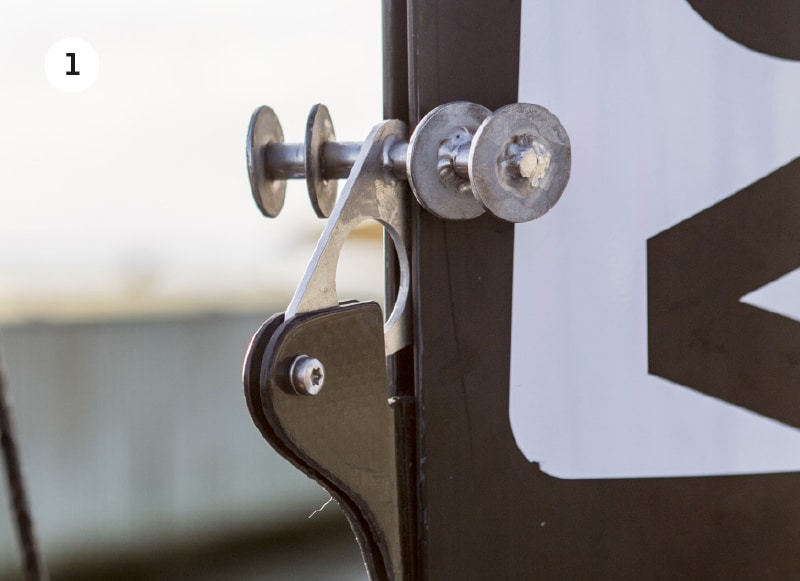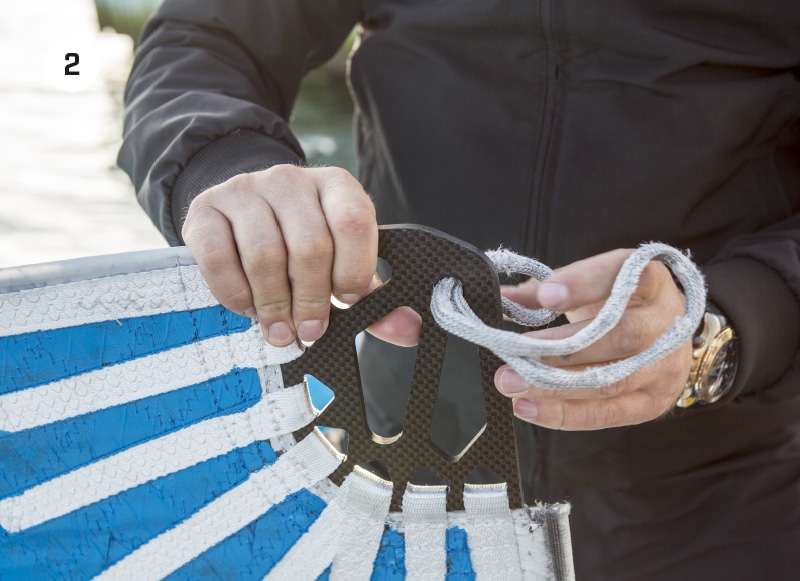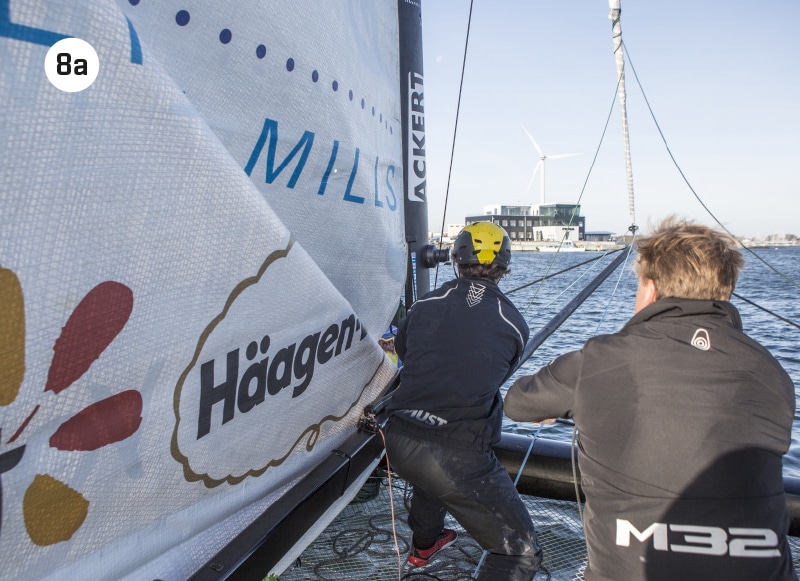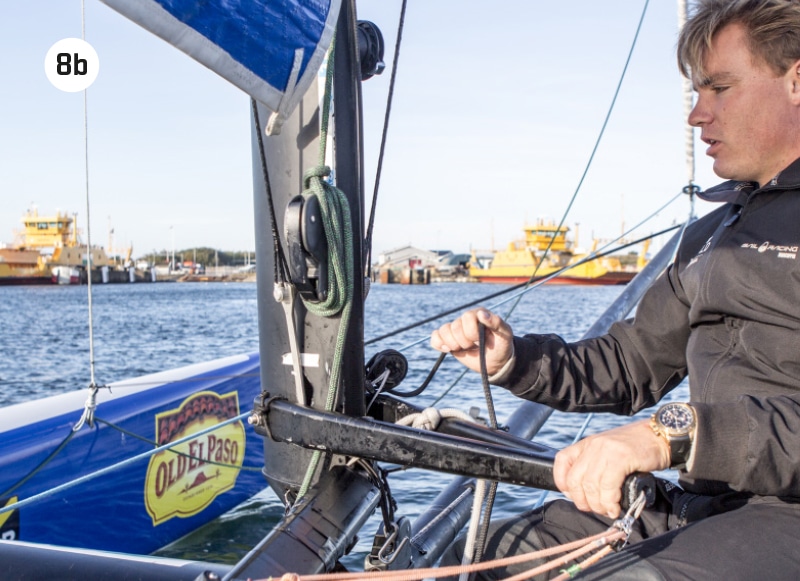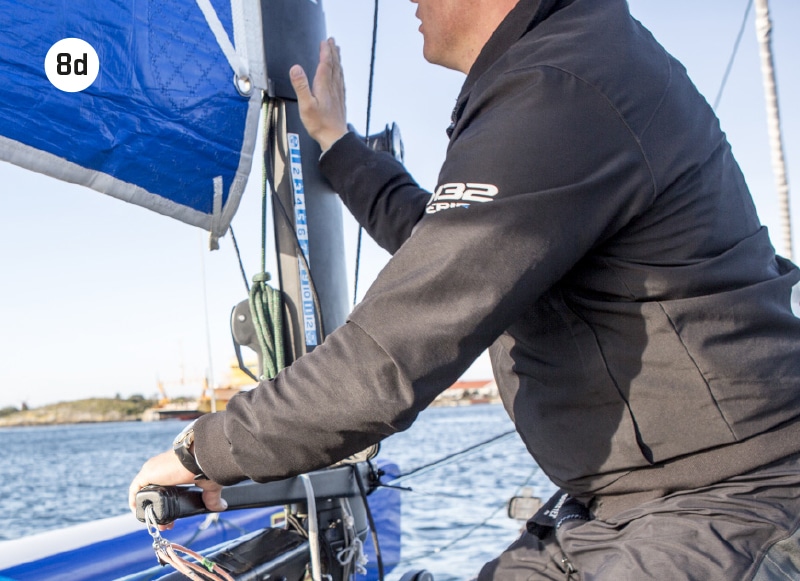Main Halyard Lock
INSTRUCTIONS
1.) The halyard lock consists of a carbon fiber traveler, a steel locking arm and a spring.
2.) The main halyard is connected to the halyard lock via a short Dyneema loop.
3.) The sail is hooked to the locking arm via a longer Dyneema loop.
4.) Both loops hang on the same spot on the locking arm.
5.) The Main halyard is tied to the smaller loop with a half hitch and secured with a stop knot.
6.) Unhook the loop from the locking arm when removing the Main halyard, do not untie the knot.
7.) Before hoisting the main:
• Check that the spring has enough tension to pull the locking arm fully down into locking position.
• Pull back the locking arm and slide the assembly into the luff track.
• Hook the Main halyard to the locking arm. The stop knot MUST face away from the mast.
• Hook the Main sail to the locking arm.
IMPORTANT!
It’s IMPORTANT that the stop knot always faces away from the mast otherwise the halyard lock WILL NOT FUNCTION.
IMPORTANT!
Make sure that the steel locking arm is all the way down into the groove when locked. Do not connect the cunningham or boom if this is not the case as it is not designed to take the load unless the steel locking arm is all the way into the groove.
8.) How to Lock in Upper Position:
a.) Hoist the Main all the way to the top. No winch should be needed if the mainsail track is clean.
b.) Twist the rotation arm to get some friction so that the sail goes gently into the lock.
c.) Push the sail upward at the bottom and at same time release the Main halyard completely (The halyard needs to be completely slack all the way for the lock to function).
d.) See to that the mast and sail is aligned and pointing straight into the wind. Slowly pull down the sail until it locks. The lock will not function if the sail is pull down to fast or if there is any tension in the halyard.
9.) To Unhook Main Halyard Lock:
• Simply hoist the sail a little bit and then pull down the sail with some tension in the halyard until the lock has travelled past the cut out in the mast. (Tension in sail and halyard equals opening the lock. No tension in halyard equals locking position.)
• The halyard is locked when the locking arm is in the one of the cut outs in the mast and NO tension in the halyard.
IMPORTANT!
Before fastening the boom, a strop should be fastened around the mast through the cunning ham ring tight to the mast. This is done to prevent the ball rope from exiting the track..
10.) How to Lock at Reef Points:
• Hoist or lower the sail to a position just above reefing point, then slowly pull down the sail without any tension in the halyard until the halyard locks.
• To unhook simply hoist the sail a little bit and then pull down the sail with some tension in the halyard until the lock has travelled past the cut out in the mast.
• Tip: If you pull down the sail fast past the reef points the main halyard will not lock.
11.) If the Lock Does Not Lock:
• Check that the stop knot is facing away from the mast.
• Check that the halyard is slack all the way.
• Check that the sail is hoisted beyond the locking position.
• Check that the spring has enough tension.
• Check that the small loop connecting halyard and lock has the correct length.
• The inner measurement of a flatten loop shall be between 11-12cm.

